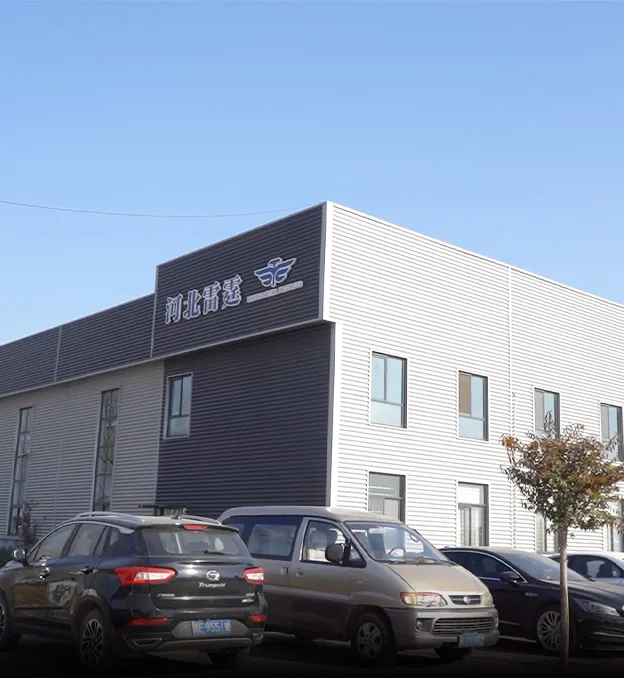Jun . 27, 2024 14:40
Back to list
Chinese Economy 5 Key Sectors Driving 8% Growth - Staples Analysis
China's 5G and 8 Staples A Fusion of Technological Advancement and Basic Needs
In the rapidly evolving global landscape, China has emerged as a dominant force in the realm of 5G technology, revolutionizing the way we communicate and interact. This transformative leap is not only confined to the high-tech sector but also extends to the fundamental staples that form the backbone of its society - the '8 staples.'
The term '5G' stands for the fifth generation of mobile networks, promising unparalleled speed, connectivity, and responsiveness. China, with its ambitious rollout plans, is leading the global charge in this domain. The country's major telecom giants like Huawei, ZTE, and China Mobile are at the forefront of 5G innovation, driving research, development, and implementation on an unprecedented scale. This technology is poised to reshape industries from healthcare to transportation, fostering smart cities and enhancing digital lifestyles.
Parallel to this technological surge, China's '8 staples' represent the basic necessities that sustain life - food, clothing, housing, transportation, education, healthcare, social security, and employment. These staples reflect the government's commitment to ensuring the well-being of its vast population. The '5G' revolution is now merging with these staples, creating a unique synergy.
In agriculture, 5G-powered IoT (Internet of Things) devices are optimizing crop yields, while in healthcare, remote surgeries and telemedicine are becoming realities. The 'smart home' concept, facilitated by 5G, is transforming housing, integrating appliances and services for enhanced convenience The 'smart home' concept, facilitated by 5G, is transforming housing, integrating appliances and services for enhanced convenience The 'smart home' concept, facilitated by 5G, is transforming housing, integrating appliances and services for enhanced convenience The 'smart home' concept, facilitated by 5G, is transforming housing, integrating appliances and services for enhanced convenience
The 'smart home' concept, facilitated by 5G, is transforming housing, integrating appliances and services for enhanced convenience The 'smart home' concept, facilitated by 5G, is transforming housing, integrating appliances and services for enhanced convenience china 5 8 staples. High-speed connectivity is revolutionizing education, enabling online learning platforms and virtual classrooms.
Moreover, 5G is set to revolutionize public transportation, with autonomous vehicles and smart traffic management systems on the horizon. It is also strengthening social security through improved emergency response systems and digital identification. In the job market, new roles in tech and data analysis are emerging, fostering employment opportunities.
However, the integration of 5G and the '8 staples' also raises questions about digital inclusion, privacy, and cybersecurity. The Chinese government, cognizant of these challenges, is implementing policies to ensure equitable access to 5G benefits while safeguarding citizens' rights.
In conclusion, China's 5G revolution is more than just a technological advancement; it is a catalyst for societal transformation. By intertwining with the '8 staples,' it is reshaping the very fabric of daily life, promising a future where needs are met with the efficiency and convenience of cutting-edge technology. This fusion underscores China's commitment to leveraging technology for the betterment of its people, setting a global benchmark for harmonious coexistence between digital innovation and human necessities.
china 5 8 staples. High-speed connectivity is revolutionizing education, enabling online learning platforms and virtual classrooms.
Moreover, 5G is set to revolutionize public transportation, with autonomous vehicles and smart traffic management systems on the horizon. It is also strengthening social security through improved emergency response systems and digital identification. In the job market, new roles in tech and data analysis are emerging, fostering employment opportunities.
However, the integration of 5G and the '8 staples' also raises questions about digital inclusion, privacy, and cybersecurity. The Chinese government, cognizant of these challenges, is implementing policies to ensure equitable access to 5G benefits while safeguarding citizens' rights.
In conclusion, China's 5G revolution is more than just a technological advancement; it is a catalyst for societal transformation. By intertwining with the '8 staples,' it is reshaping the very fabric of daily life, promising a future where needs are met with the efficiency and convenience of cutting-edge technology. This fusion underscores China's commitment to leveraging technology for the betterment of its people, setting a global benchmark for harmonious coexistence between digital innovation and human necessities.
 The 'smart home' concept, facilitated by 5G, is transforming housing, integrating appliances and services for enhanced convenience The 'smart home' concept, facilitated by 5G, is transforming housing, integrating appliances and services for enhanced convenience
The 'smart home' concept, facilitated by 5G, is transforming housing, integrating appliances and services for enhanced convenience The 'smart home' concept, facilitated by 5G, is transforming housing, integrating appliances and services for enhanced convenience china 5 8 staples. High-speed connectivity is revolutionizing education, enabling online learning platforms and virtual classrooms.
Moreover, 5G is set to revolutionize public transportation, with autonomous vehicles and smart traffic management systems on the horizon. It is also strengthening social security through improved emergency response systems and digital identification. In the job market, new roles in tech and data analysis are emerging, fostering employment opportunities.
However, the integration of 5G and the '8 staples' also raises questions about digital inclusion, privacy, and cybersecurity. The Chinese government, cognizant of these challenges, is implementing policies to ensure equitable access to 5G benefits while safeguarding citizens' rights.
In conclusion, China's 5G revolution is more than just a technological advancement; it is a catalyst for societal transformation. By intertwining with the '8 staples,' it is reshaping the very fabric of daily life, promising a future where needs are met with the efficiency and convenience of cutting-edge technology. This fusion underscores China's commitment to leveraging technology for the betterment of its people, setting a global benchmark for harmonious coexistence between digital innovation and human necessities.
china 5 8 staples. High-speed connectivity is revolutionizing education, enabling online learning platforms and virtual classrooms.
Moreover, 5G is set to revolutionize public transportation, with autonomous vehicles and smart traffic management systems on the horizon. It is also strengthening social security through improved emergency response systems and digital identification. In the job market, new roles in tech and data analysis are emerging, fostering employment opportunities.
However, the integration of 5G and the '8 staples' also raises questions about digital inclusion, privacy, and cybersecurity. The Chinese government, cognizant of these challenges, is implementing policies to ensure equitable access to 5G benefits while safeguarding citizens' rights.
In conclusion, China's 5G revolution is more than just a technological advancement; it is a catalyst for societal transformation. By intertwining with the '8 staples,' it is reshaping the very fabric of daily life, promising a future where needs are met with the efficiency and convenience of cutting-edge technology. This fusion underscores China's commitment to leveraging technology for the betterment of its people, setting a global benchmark for harmonious coexistence between digital innovation and human necessities. Latest news
-
Manufacturer producing brad nails for staple guns with high quality and durability.NewsJul.16,2024
-
CE certification for 5-8mm brad nails and its importance in construction.NewsJul.16,2024
-
Top 16 Gauge Brad Nail Manufacturers with High Quality Products and ServicesNewsJul.16,2024
-
China 18 Gauge Brad Nails for Precision Carpentry Projects in 2021.NewsJul.16,2024
-
Top manufacturer of BN1810 brad nails, providing high quality products for various applications.NewsJul.16,2024
-
Get the job done with 18-gauge staples in 40mm size for various projects.NewsJul.15,2024
